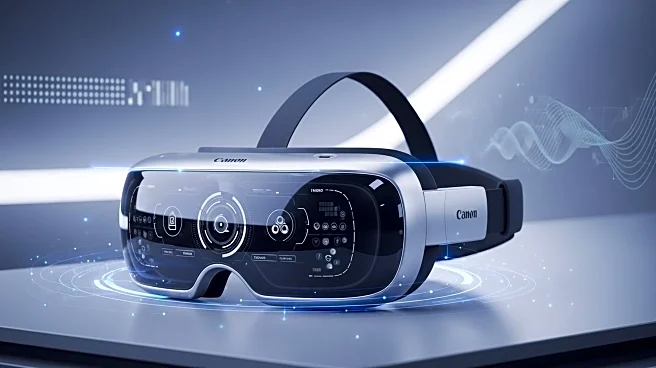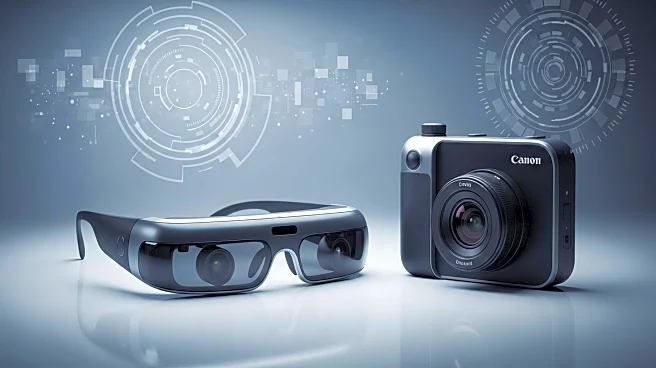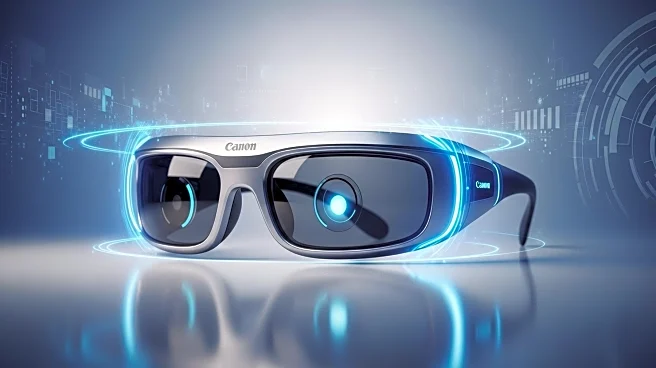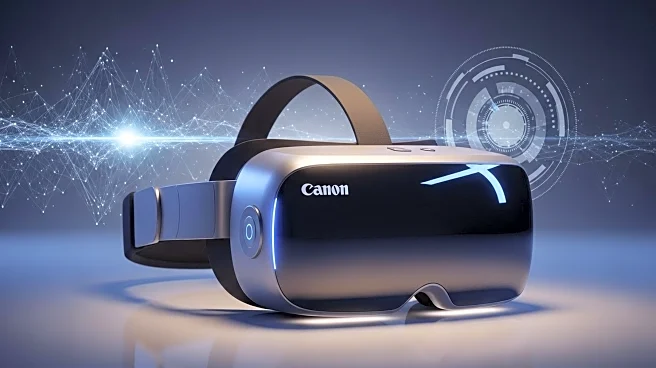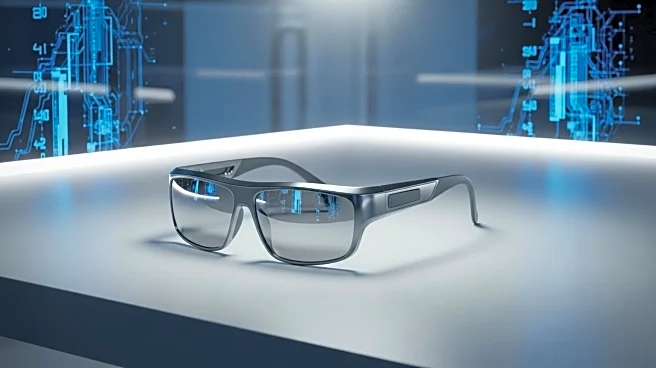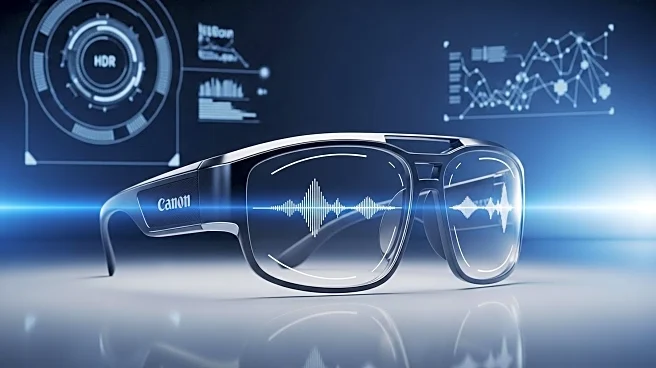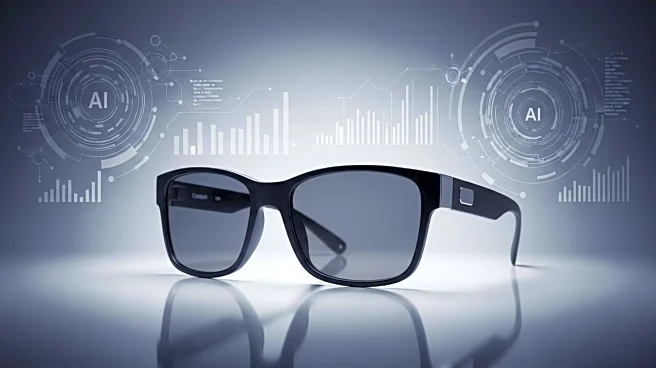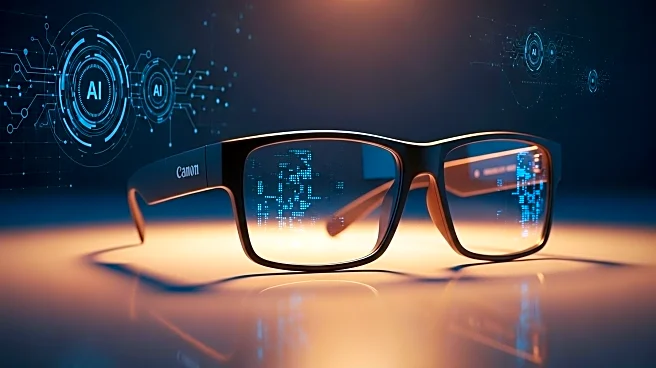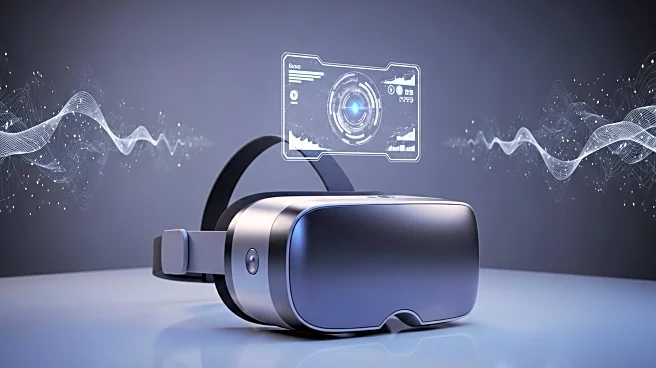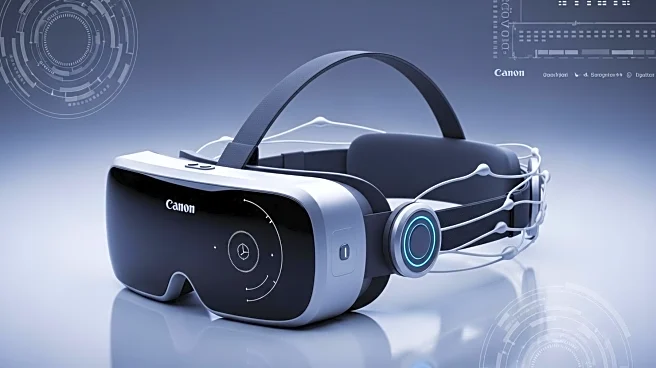What is the story about?
What's Happening?
The year 2025 is witnessing significant advancements in augmented reality (AR) devices, with major players like Meta, Amazon, and Apple introducing new technologies that could redefine wearables. Meta's Ray-Ban smart glasses now feature a built-in display for direct app overlays, while Amazon's 'Jayhawk' AR glasses are expected to integrate retail functionalities. Apple's 'Liquid Glass' design promises thinner optics, making AR glasses lighter and more stylish. These developments are supported by faster local chips and on-device AI, enhancing performance and privacy. The focus is on practical applications such as maps, shopping, and social overlays, which are expected to drive mainstream adoption.
Why It's Important?
The advancements in AR technology represent a pivotal shift in the wearables market, potentially transforming how consumers interact with digital content. The integration of AR into everyday devices like glasses could lead to new consumer experiences, making technology more immersive and accessible. This evolution may impact various industries, including retail, healthcare, and entertainment, as AR applications become more prevalent. Companies that successfully integrate AR into their products could gain a competitive edge, attracting tech-savvy consumers seeking innovative solutions. The emphasis on privacy and performance also addresses growing concerns about data security, making AR devices more appealing to a broader audience.
What's Next?
As AR technology continues to evolve, we can expect further innovations that enhance user experience and expand the capabilities of wearables. Companies may focus on developing more intuitive interfaces and seamless interactions, making AR devices more user-friendly. The competition among major tech players could lead to rapid advancements, with new features and applications emerging regularly. Additionally, the growing interest in AR may drive investment in research and development, leading to breakthroughs that further integrate AR into daily life. As consumers become more accustomed to AR technology, it may become a standard feature in wearables, influencing future product designs and functionalities.
Beyond the Headlines
The rise of AR technology raises questions about its long-term impact on society and culture. As AR becomes more integrated into daily life, there may be ethical considerations regarding privacy, data usage, and the potential for digital addiction. The technology also presents opportunities for enhancing education and communication, offering new ways to interact with information and connect with others. As AR devices become more widespread, they may influence cultural norms and expectations, shaping how people perceive and engage with the world around them.
AI Generated Content
Do you find this article useful?
